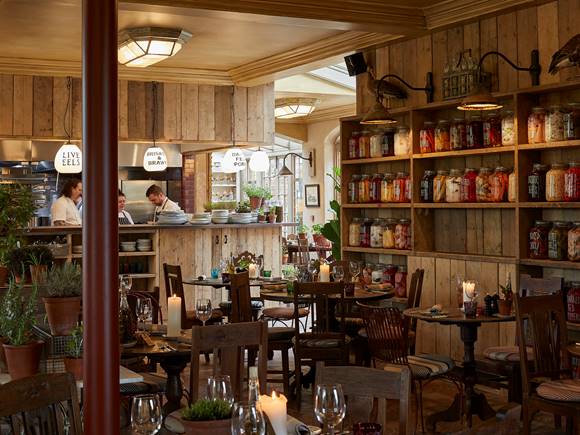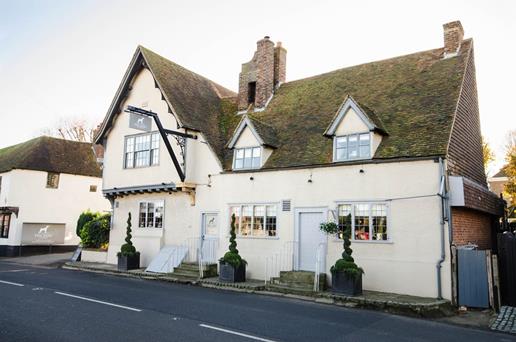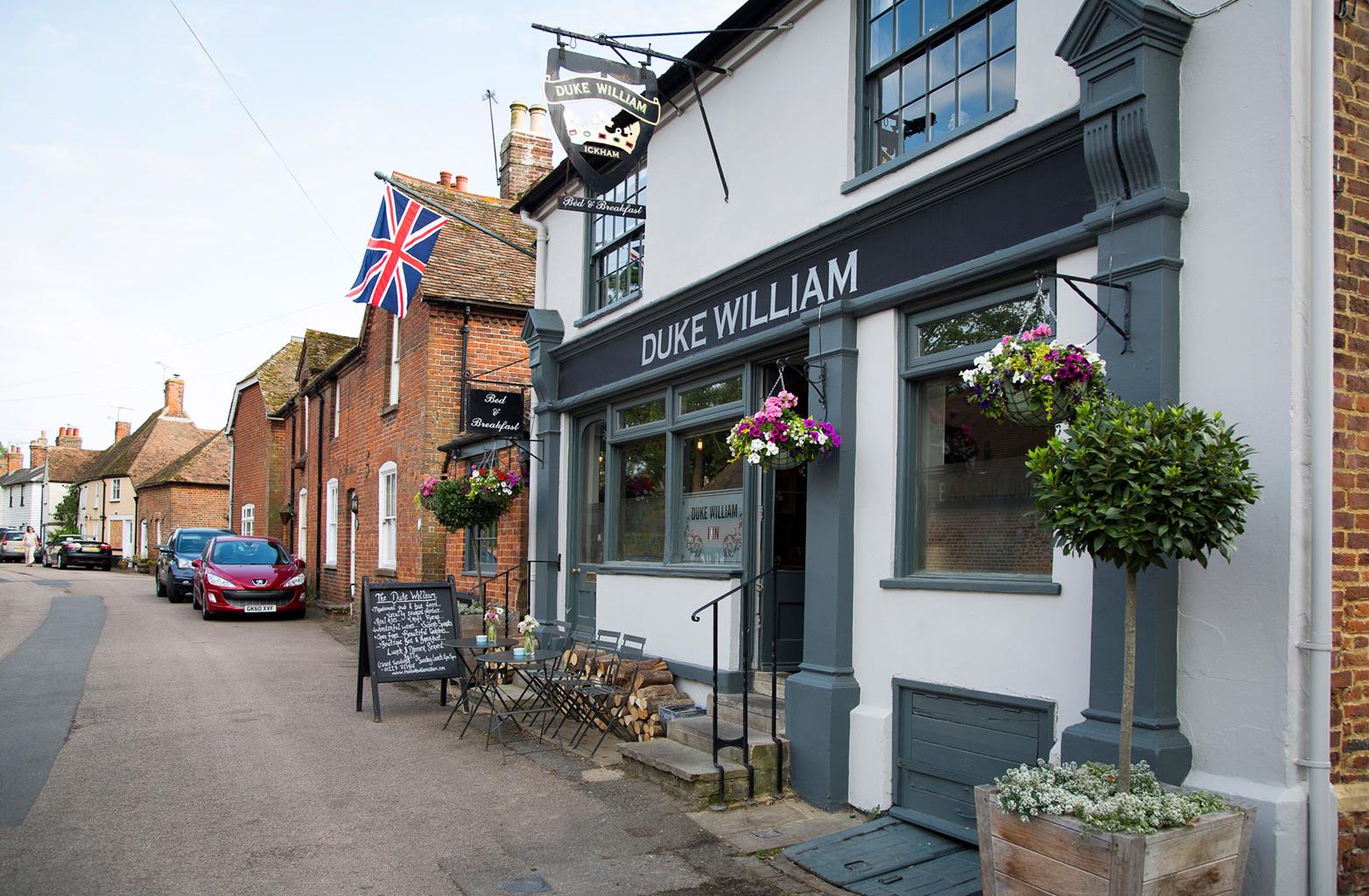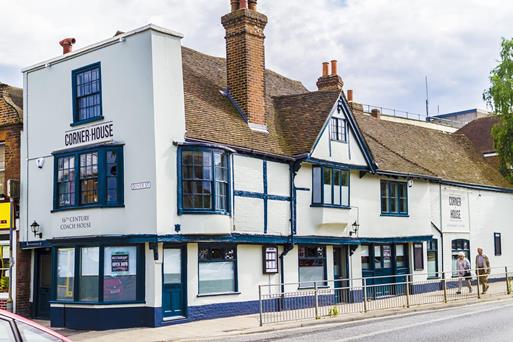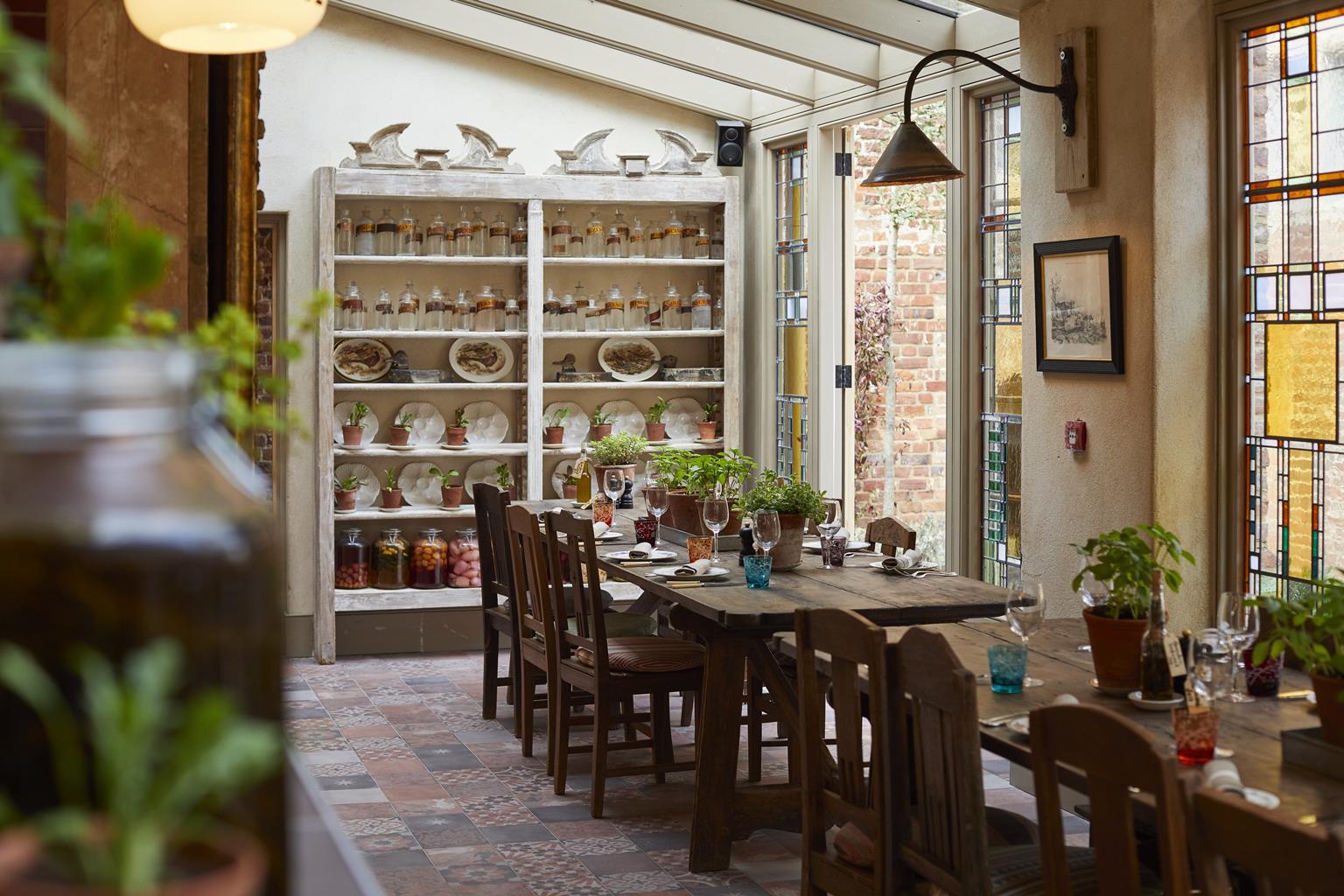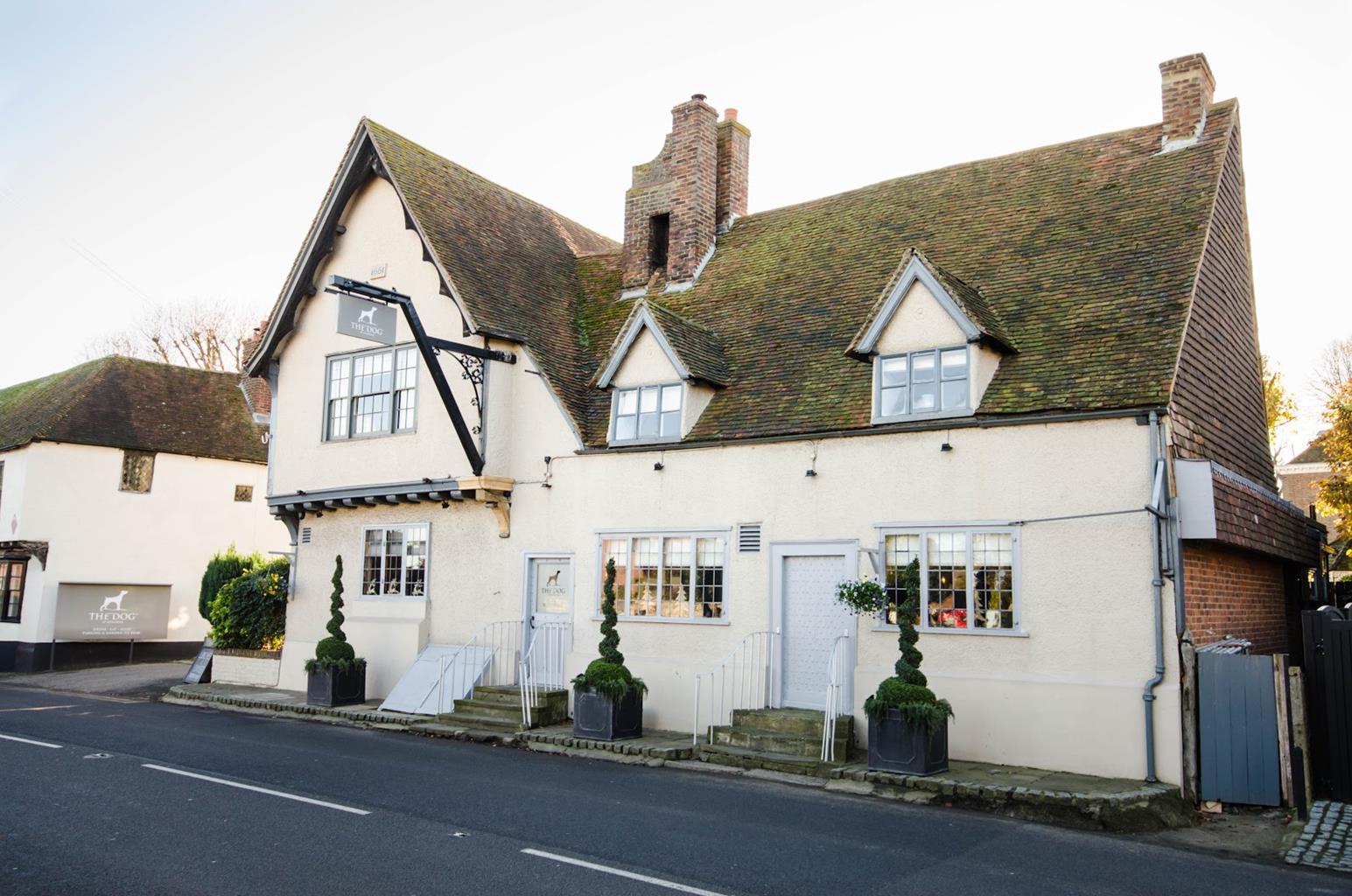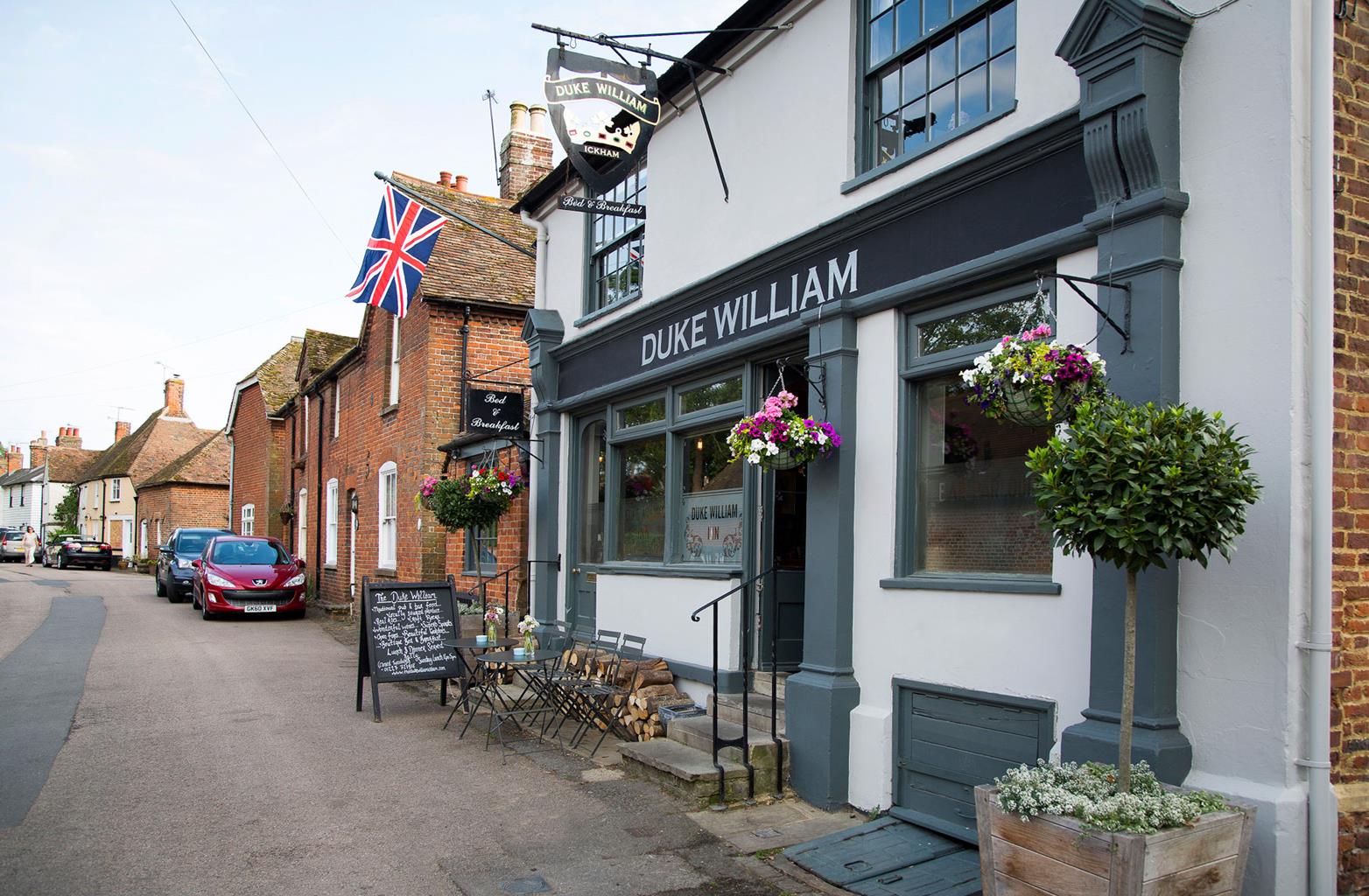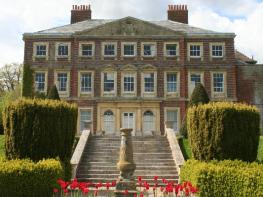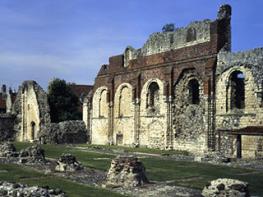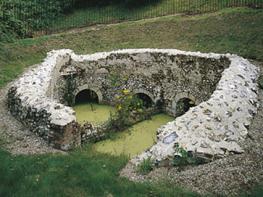Located in the Kentish countryside, THE PIG at Bridge Place is an impeccably presented 16th-…
Marching through Barham

4 miles (6.4kms)
About the walk
This walk introduces you to a forgotten corner of Kent. Barham's a pleasant village, but not so picturesque that it makes it on to the standard tourist itinerary; most people have never even heard of it. Yet Barham (pronounced Bar-rum) has witnessed more historic events than many major towns and cities – and they've all had a distinctly military flavour.
The village dates from Saxon times and sits snugly by Barham Downs, once described as 'the most historic mile of countryside in England'. It's a title it probably deserves. The Roman legions were here first in 54 BC (40,000 of them according to Julius Caesar) camping on the Downs as they battled their way across Kent. The Britons fought hard to repel them, even digging traps that they hid with trees and branches. However, they stood no chance against Caesar's mighty army – particularly after one of their leaders switched sides. Contemporary accounts claim that every single Briton was slain.
During the Norman Conquest of 1066, the Downs were again at the centre of the action, when William the Conqueror met the people of Kent, to hear them swear allegiance to him. He took a few hostages at the same time, just to encourage them to keep their word. Years later King John (1167–1216) camped on Barham Downs with 50,000 men as he prepared to go to war with France, and it was here, too, that Simon de Montfort gathered a huge army during the Barons' War. This began in 1264, after several powerful barons disagreed with the policies of the King, Henry III. Led by Simon de Montfort they took up arms and captured Henry. De Montfort, a French nobleman, then took over control of England, which he ruled until he was killed in 1265.
After that Barham was a peaceful place for a few centuries – until the outbreak of civil war, when Royalist forces assembled here in 1642 before attacking Dover Castle. And then, during the Napoleonic Wars, in the early 19th century, yes, you've guessed it, the army camped on the Downs again before heading off to fight in France. The soldiers seem to have made the most of the opportunities to meet the local women, because the church witnessed plenty of their weddings – and their children were baptised here.
Barham continued to act as a military magnet in the 20th century. During World War I the fields were filled with soldiers waiting to go overseas. And in World War II a German aircraft crashed on to the railway line. The crew were captured by the local Home Guard.
Walk directions
From the 13th-century church, with its distinctive green copper spire, walk down through the village, passing The Duke of Cumberland pub, to reach the green. Turn left along Valley Road and continue up Derringstone Hill, then turn half-left up Mill Lane.
Take the footpath on the right between houses and wind through scrubland to reach a road. Cross the stile opposite and go diagonally across the field towards the wood to join another road.
Follow the road uphill, straight on through the woods. Keep straight on towards Denton at a fork by Woodcote House and soon go steeply downhill. At the bottom go left, signed 'Denton' again. The lane now opens out on the right, giving pleasant views over pasture. Just before the main road there are two footpaths leading off to the left; take the one that forks right.
Go through trees to a gate and keep ahead through pasture towards Broome Park Hotel. Beyond two kissing gates, follow the waymarked path behind the lodges, and turn left when you reach the hotel drive. Go through the car park, turn left and walk in front of the house. Now a hotel and golf club, the house was originally built in the 17th century by Inigo Jones for Sir Basil Dixwell, the man who signed the (unfulfilled) death warrant of Charles Edward Stuart (1720–88), popularly known as Bonnie Prince Charlie. In the early 20th century it became the home of Lord Kitchener of Khartoum (1850–1916), the celebrated General who gained notoriety in World War I. He featured on the famous poster 'Your Country Needs You'.
Walk up the track to the first tee, keep ahead across the fairway (beware low-flying golf balls) and walk up to the marker post to the right of trees. Cross the next fairway ahead and go over the stile into the field. Continue along the left-hand edge, walking in the direction of Barham church. Cross a green track via a couple of stiles, then head over open fields (there is no track, so make for the oak tree left of the hedge line straight ahead of you). Pass via a hurdle into adjacent pasture and continue down the left-hand edge, then take a rickety gate onto the road.
Cross over to the other side and walk along Brickfield Road (almost directly ahead of you) past some playing fields. At the crossroads turn right and head down Gravel Castle Road. As the road bears left and begins to rise, take the stile on your left to follow a footpath and two further stiles past the cemetery to the road opposite the church.
Additional information
Village streets, tarmac lanes and field margins, several stiles
Lush downland interspersed with woods
Good, several stretches to run free but keep on lead when near livestock and on golf course
OS Explorer 138 Dover, Folkestone & Hythe
By Barham church
None on route
WALKING IN SAFETY
Read our tips to look after yourself and the environment when following this walk.
Find out more
Also in the area
About the area
Discover Kent
The White Cliffs of Dover are an English icon – the epitome of our island heritage and sense of nationhood. They also mark the point where the Kent Downs AONB, that great arc of chalk downland stretching from the Surrey Hills and sometimes known as ‘the Garden of England’, finally reaches the sea. This is a well-ordered and settled landscape, where chalk and greensand escarpments look down into the wooded Weald to the south.
Many historic parklands, including Knole Park and Sir Winston Churchill’s red-brick former home at Chartwell, are also worth visiting. Attractive settlements such as Charing, site of Archbishop Cranmer’s Tudor palace, and Chilham, with its magnificent half-timbered buildings and 17th-century castle built on a Norman site, can be found on the Pilgrim’s Way, the traditional route for Canterbury-bound pilgrims in the Middle Ages.
In the nature reserves, such as the traditionally coppiced woodlands of Denge Wood and Earley Wood, and the ancient fine chalk woodland of Yockletts Bank high on the North Downs near Ashford, it is still possible to experience the atmosphere of wilderness that must have been felt by the earliest travellers along this ancient ridgeway.
Nearby stays
Restaurants and Pubs
Nearby experiences
Recommended things to do
Why choose Rated Trips?
Your trusted guide to rated places across the UK
The best coverage
Discover more than 15,000 professionally rated places to stay, eat and visit from across the UK and Ireland.
Quality assured
Choose a place to stay safe in the knowledge that it has been expertly assessed by trained assessors.
Plan your next trip
Search by location or the type of place you're visiting to find your next ideal holiday experience.
Travel inspiration
Read our articles, city guides and recommended things to do for inspiration. We're here to help you explore the UK.


